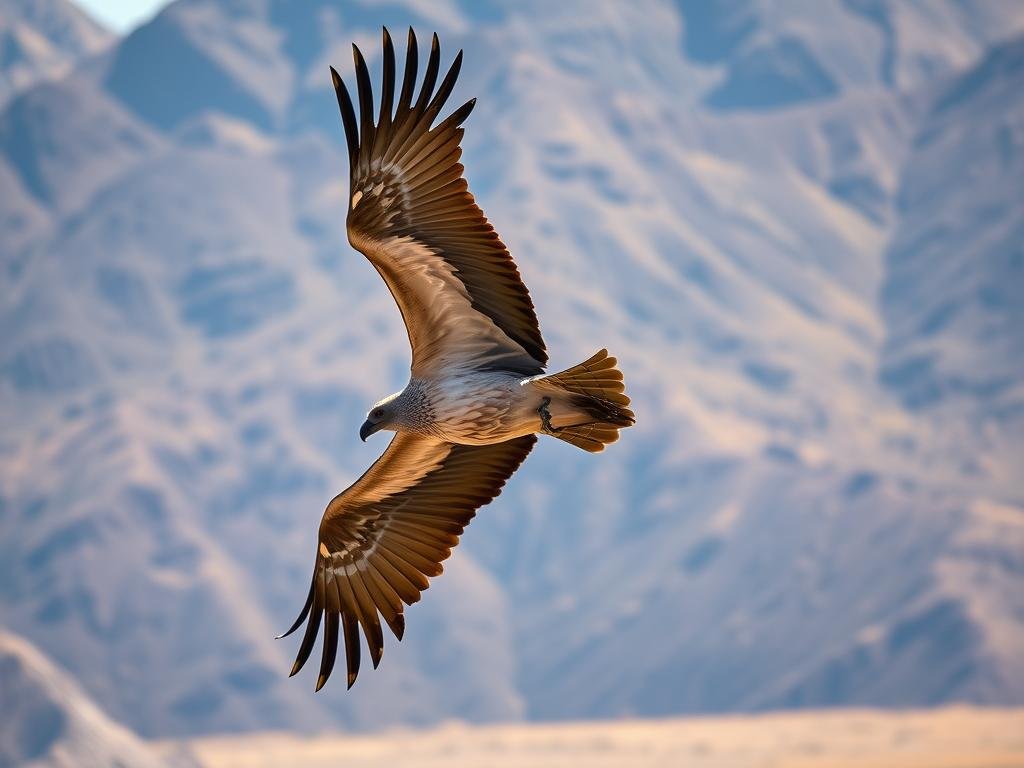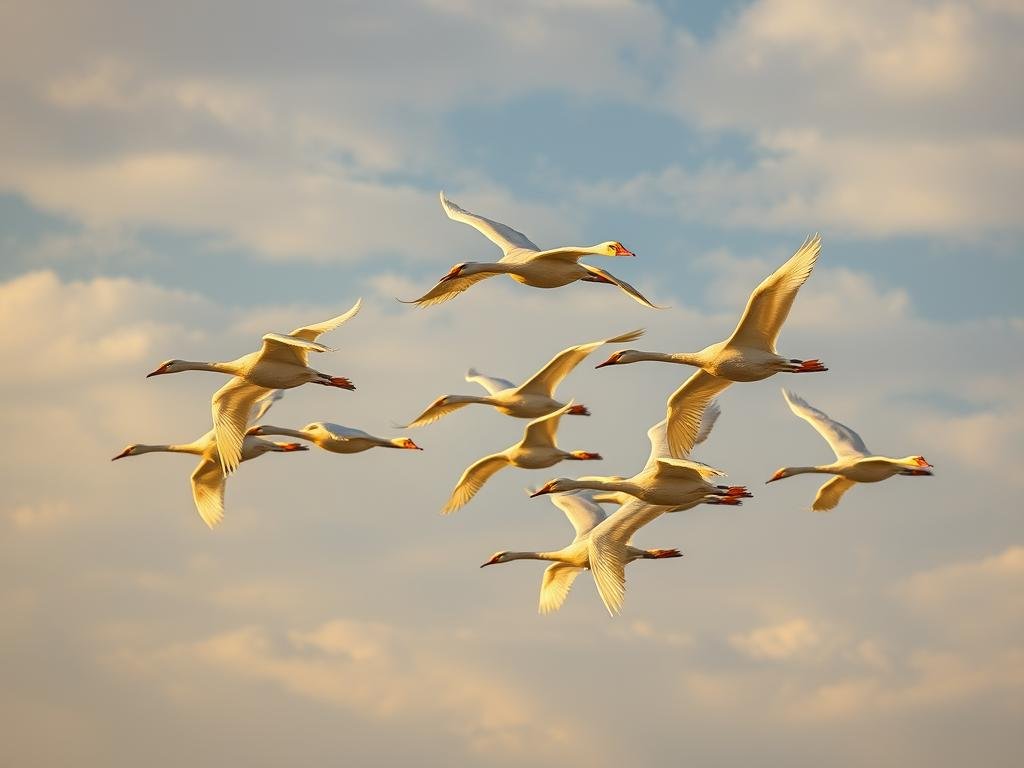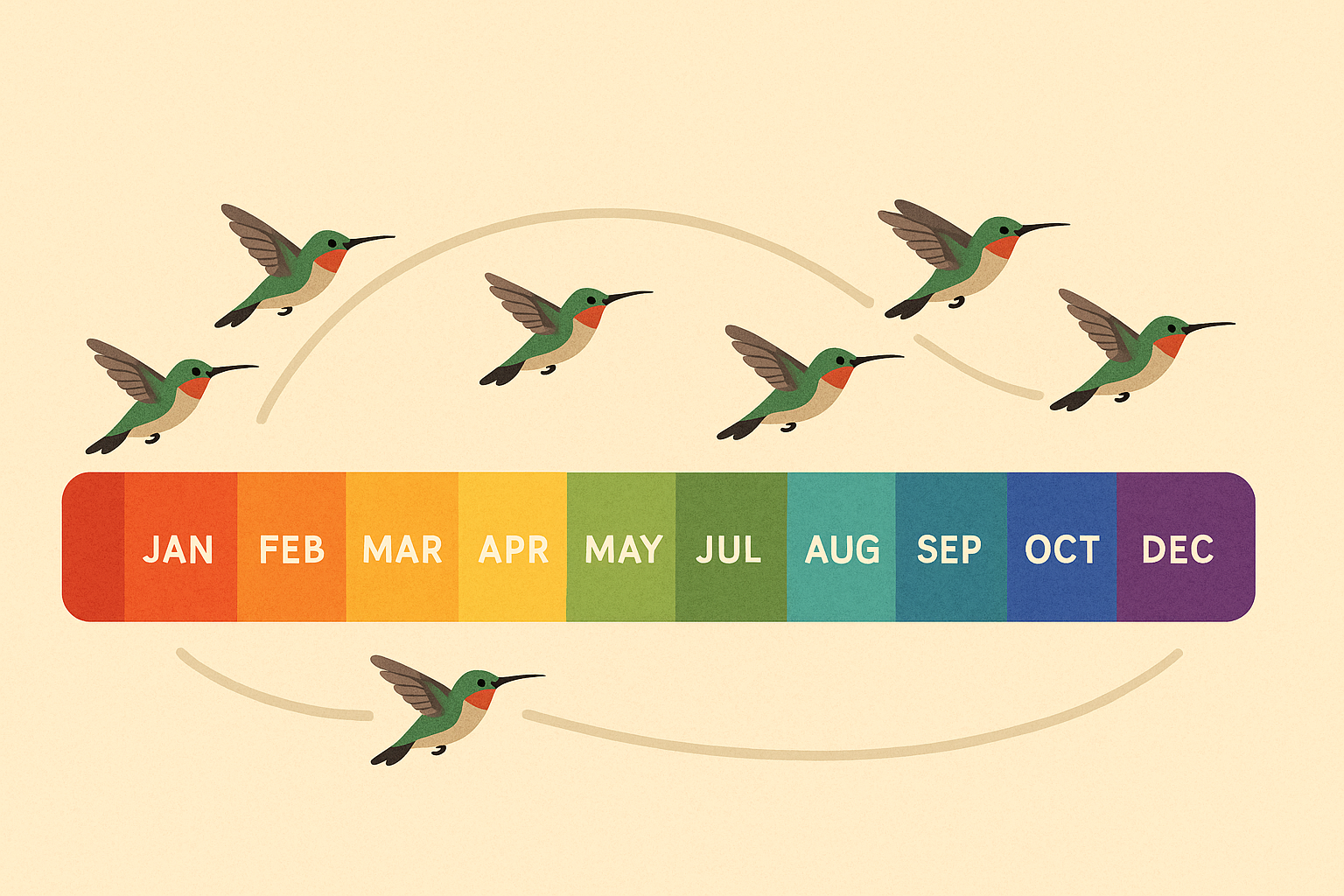Nature’s marvels never cease to amaze, especially when it comes to avian flight and the wanders of the highest flying birds in the world. Some species soar at breathtaking altitudes, defying expectations with their incredible adaptations. The Rüppell’s Griffon Vulture holds the record, reaching an astonishing 37,000 feet—higher than Mount Everest.
Migration, predator avoidance, and energy efficiency drive these feats. For example, the Bar-Headed Goose effortlessly crosses the Himalayas, while the Common Crane glides at 33,000 feet during long journeys. Such abilities are powered by specialized hemoglobin and thermal soaring techniques.
From vultures to ducks, these high-altitude fliers showcase nature’s ingenuity. Their unique traits help them thrive where oxygen is scarce and temperatures plummet. Let’s dive into the fascinating world of these airborne wonders.
Key Takeaways
- Rüppell’s Griffon Vulture holds the altitude record at 37,000 feet.
- Migration and predator avoidance push birds to extreme heights.
- Specialized hemoglobin aids oxygen intake in thin air.
- Thermal currents help species like the Bearded Vulture soar efficiently.
- Even ducks, like the Mallard, can reach impressive altitudes.
Introduction to High-Altitude Flight
Flight at extreme elevations showcases remarkable biological and environmental adaptations. Species like the Rüppell’s vulture thrive where oxygen levels drop to 6%, thanks to specialized hemoglobin. These feats reveal nature’s ingenuity in overcoming harsh conditions.

Why Do Birds Fly So High?
Elevation serves multiple survival purposes. Migratory species conserve energy by riding thermal currents, reducing flight effort in thin air. Others, like common cranes, ascend to evade predators during Himalayan crossings.
Physiological costs are steep. Bar-headed geese lose 15–20% body weight mid-migration due to energy demands. Yet, the trade-off—accessing safer routes or abundant food—justifies the exertion.
The Science Behind Extreme Altitudes
Thinner air reduces drag but strains respiration. Golden eagles scan terrains at 13,000 feet, while mallards accidentally collide with planes above 21,000 feet. Adaptations include:
| Adaptation | Example Species | Benefit |
|---|---|---|
| Enhanced hemoglobin | Rüppell’s vulture | Oxygen absorption at 30,000 ft |
| Thermal soaring | Bar-headed goose | Energy-efficient migration |
| Feather insulation | Alpine chough | Survival in freezing temps |
Thermals act as invisible elevators, propelling birds upward with minimal effort. This technique, detailed in avian flight mechanics, is vital for long journeys. Meanwhile, alpine nesters like the bearded vulture optimize foraging by avoiding low-altitude competition.
Rüppell’s Griffon Vulture: The Uncontested Champion
Few creatures push the limits of flight like the Rüppell’s Griffon Vulture. This species holds the altitude record, soaring where even commercial jets cruise. Its adaptations reveal nature’s genius for survival in extreme conditions.
Record-Breaking Altitude: 37,000 Feet
In 1973, a plane over Ivory Coast collided with a griffon vulture at 37,000 feet—higher than Everest. Feather analysis confirmed it as a Rüppell’s, making it one of three species that fly at airline heights.
Mottled plumage blends with arid landscapes, while thermal circling helps spot carrion from miles away. Cruising at 6,000 feet, it hits 35 km/h with minimal effort.

Unique Hemoglobin Adaptations
Thin air is no barrier. Its hemoglobin subunit alpha absorbs oxygen efficiently, outperforming human blood in low-pressure zones. This lets it thrive where oxygen levels drop below 6%.
| Adaptation | Function | Impact |
|---|---|---|
| Specialized hemoglobin | Oxygen uptake | Survival above 30,000 feet |
| Thermal soaring | Energy conservation | Efficient scavenging |
| Desert camouflage | Predator avoidance | Nest protection |
East African grasslands and Sahara woodlands are its home. Sadly, habitat loss has labeled it critically endangered. Yet, its flight mastery remains unmatched.
Common Crane: Soaring Over the Himalayas
Few sights rival the majesty of common cranes gliding effortlessly over towering mountain ranges. These birds conquer the Himalayas at 33,000 feet, a feat confirmed by radar during migrations. Their journeys span continents, from European breeding grounds to winter havens in Africa and Asia.

Sky-High Survival Tactics
Altitude is their shield. By flying at 10,000 meters, they evade golden eagles and other predators. Thermal currents reduce energy expenditure, letting them travel 500 miles daily. Their 7.8-foot wingspan maximizes lift in thin air.
Europe’s reintroduction programs celebrate their comeback. Once extinct in the UK, they now thrive in wetlands, thanks to conservation efforts. Distinctive red crowns and grey plumage make them easy to spot.
Anatomy of a High-Flier
- Hemoglobin efficiency: Absorbs oxygen better than lowland species.
- Feather insulation: Shields against freezing temperatures.
- Navigation: Uses stars and landmarks for 3,000-mile journeys.
Their return symbolizes resilience. From near extinction to reclaiming skies, the common crane proves nature’s adaptability knows no bounds.
Bar-Headed Goose: Conquering Mount Everest
The bar-headed goose defies expectations by navigating some of Earth’s most extreme altitudes. Reaching 29,500 feet, this Anser indicus soars higher than most aircraft, blending endurance with evolutionary genius. Its black-and-white head markings make it instantly recognizable, but its flight prowess is what truly astonishes.

Physiology Built for Thin Air
Surviving at elevations near Mount Everest requires specialized adaptations. Researchers found these geese lower their blood temperature and metabolism to conserve energy in hypoxic conditions. Wind tunnel tests confirm they fly effortlessly where oxygen levels drop dangerously low.
| Adaptation | Function | Altitude Impact |
|---|---|---|
| Enhanced hemoglobin | Oxygen absorption | 29,500 ft flights |
| Metabolic slowdown | Energy preservation | Long Himalayan crossings |
| V-formation flight | Reduced wind resistance | Efficient migration |
Migration Myths and GPS Truths
George Lowe’s 1953 Everest expedition reported unconfirmed sightings, but modern tracking tells the full story. Bangor University recorded flocks crossing Himalayan passes at 7,300 feet, though peaks exceed 29,000 feet. Why avoid summits? Passes offer thermal currents and shorter routes.
Breeding in Central Asian lakes, they winter in India’s wetlands. Their 1,500-mile journey showcases nature’s precision—a balance of risk and reward.
Whooper Swan: Speed and Altitude Combined
The whooper swan combines grace with raw power, achieving feats few birds can match. Recognizable by its yellow-and-black bill, this species towers over mute swans in both size and aerial prowess.

In 1967, radar tracked a flock at 27,000 feet over Northern Ireland—higher than most commercial flights. These swans leverage wind currents to hit speeds of 200 km/h, darting above snow squalls that ground other species.
Their migration from Iceland to Scotland spans 1,290 km in just seven hours. By flying at extreme altitude, they conserve energy and avoid predators.
Unlike Bewick’s or trumpeter swans, the whooper’s endurance is unmatched. Pure white plumage camouflages against snowy landscapes, while its broad wings slice through thin air effortlessly.
Alpine Chough: The High-Nesting Crow
Among mountain-dwelling birds, the Alpine Chough stands out for its extreme elevation feats. This glossy black member of the crow family nests higher than any other bird, with confirmed sites at 21,300 feet. Its yellow beak and sleek plumage distinguish it from the red-billed chough, a close relative.
Mastering Thin Air and Freezing Temps
The Pyrrhocorax graculus thrives where oxygen is scarce. Dense feathering and red legs minimize heat loss, while lightweight bones aid agile flight. Climbers on Everest spotted these birds at 26,500 feet in 1924, proving their unmatched altitude tolerance.
Key adaptations include:
- Thermal soaring: Rides updrafts to conserve energy.
- Insect reliance: Feeds on high-altitude arthropods, avoiding lowland competition.
- Social foraging: Flocks scout snowy slopes for food, reducing individual risk.
From the Alps to the Himalayas
This species dominates Eurasian mountains, from the Swiss Alps to Western China. Unlike ravens or magpies, it rarely descends below 6,500 feet. Its flight—a mix of rapid flaps and glides—outperforms heavier corvids in thin air.
Conservation efforts focus on protecting alpine meadows, its primary habitat. As climates shift, the Alpine Chough remains a symbol of resilience at the roof of the world.
Bearded Vulture: The Bone Breaker
With wings built for thin air and a taste for bones, the bearded vulture defies expectations. This scavenger, *Gypaetus barbatus*, dominates rocky mountains from the Alps to the Himalayas, where it drops bones from 150 feet to crack them open.
Feeding Habits and Flight Patterns
Osteophagy—bone-eating—defines this species. Unlike the Egyptian vulture, which prefers carrion, the bearded vulture scavenges 85–90% bones, using gravity as a tool. Thermal updrafts then lift it back to altitudes of 24,000 feet.
Key ecological roles include:
- Nutrient recycling: Clears carcasses, reducing disease spread.
- Prey selection: Targets tortoises, dropping them to shatter shells.
- Low-altitude hunts: Flies 2–4 feet high to spot marrow-rich bones.
Its rust-colored plumage, stained by iron-rich soil, camouflages against cliffs. Yet habitat loss in Europe threatens this umbrella species, whose survival benefits entire ecosystems.
Andean Condor: Master of the Andes
The Andean condor reigns supreme over South America’s rugged peaks. With a wingspan stretching up to 10.8 feet, this avian giant dominates mountain skies with effortless grace. Charles Darwin marveled at its ability to soar for hours without a single wing flap—a testament to evolutionary perfection.
Anatomy of a Gliding Specialist
Unlike most birds, the Vultur gryphus lacks a large sternum. This adaptation reduces weight, allowing it to ride thermal currents with minimal energy expenditure. National Geographic researchers recorded one at 21,300 feet—higher than many commercial flights.
Key flight adaptations include:
- Lightweight skeleton: Weighs 15–33 lbs despite massive size
- Thermal mastery: Uses mountain updrafts to stay aloft for days
- Keen eyesight: Spots carrion from 5 miles away
| Feature | Adaptation Benefit | Altitude Impact |
|---|---|---|
| Broad wings | Maximum lift in thin air | 21,000+ ft flights |
| Reduced muscle mass | Energy-efficient gliding | 150-mile daily range |
| Specialized lungs | Oxygen efficiency | High-altitude foraging |
Cultural Icon and Conservation
In Inca mythology, the condor symbolized the upper world. Today, it faces threats from habitat loss and lead poisoning. Conservation programs in Chile and Argentina work to protect nesting sites.
Compared to its California cousin, the Andean species thrives at higher elevations. Both share gliding techniques, but the South American variant dominates more extreme terrain. From coastal deserts to snow-capped peaks, this winged monarch claims the skies.
Bar-Tailed Godwit: The Marathon Migrator
Few journeys rival the endurance of the bar-tailed godwit. This remarkable shorebird completes an 11,000 km non-stop flight from Alaska to New Zealand, setting records for avian stamina. Unlike most migratory species, it achieves this feat without resting or refueling.
Preparing for the Ultimate Journey
Before takeoff, these birds double their body weight by storing fat reserves. This biological fuel tank allows them to burn 0.41% of their mass per hour—one of the lowest rates among migratory species.
Key adaptations enable this marathon:
- Energy efficiency: Riding low-pressure systems reduces flight effort
- Navigation mastery: Uses Earth’s magnetic field and wind patterns over featureless oceans
- Altitude strategy: 20% of the journey occurs above 16,400 feet, peaking at 6,000 feet
Tracking the Impossible Flight
Satellite telemetry revolutionized our understanding of this migration. Researchers tracked a female (coded E7) flying 7,200 miles in eight days—the longest recorded non-stop avian journey.
These findings highlight nature’s incredible capacity for adaptation. From Arctic breeding grounds to Australasian wintering sites, the bar-tailed godwit redefines what’s possible in animal endurance.
Mallard Duck: The Unexpected High Flyer
Ducks aren’t usually associated with extreme heights, but the mallard shatters this assumption. In 1962, a U.S. Fish and Wildlife Service report confirmed a collision with a Nevada plane at 21,000 feet—higher than many migratory species fly.
Unlike the bar-headed goose, adapted for Himalayan crossings, mallards achieve these bursts accidentally. Their flexible migration patterns and robust lungs allow short-term survival in thin air.
Key adaptations include specialized hemoglobin for oxygen uptake and hollow bones reducing weight. Yet, their anatomy prioritizes aquatic agility over sustained high flight.
Such incidents highlight risks of bird strikes at cruising altitudes. The 1954 discovery of a pintail duck skeleton on Everest further proves waterfowl’s hidden potential.
Conclusion: The Wonders of Avian Flight
From icy peaks to thin air, these species redefine altitude limits. The Rüppell’s vulture dominates at 37,000 feet, while common cranes glide at 33,000 feet using thermal currents. Bar-headed geese showcase hemoglobin adaptations for oxygen-starved heights.
Such feats inspire aviation safety research, as collisions occur above 20,000 feet. Yet mysteries linger, like unconfirmed Everest crossings. Conservation is critical—habitat loss threatens record-holders like the Rüppell’s vulture.
These birds prove flight’s boundless potential. Their adaptations—from wingspans to lung efficiency—reveal nature’s genius. Protecting them ensures the world keeps witnessing these aerial marvels.



0 Comments